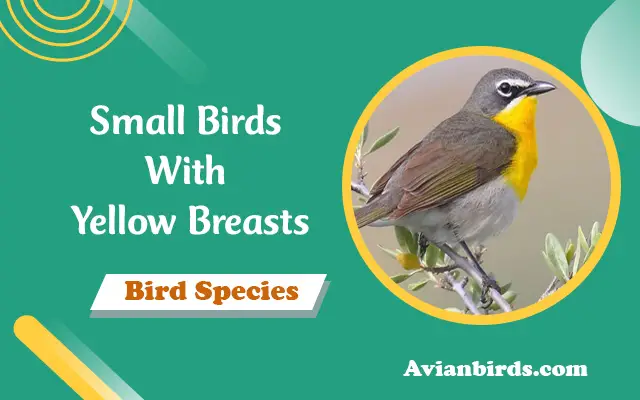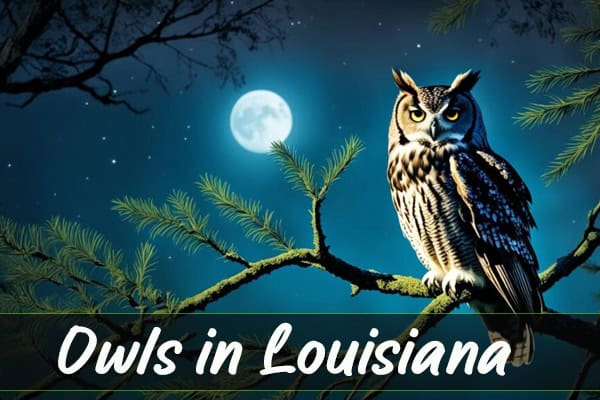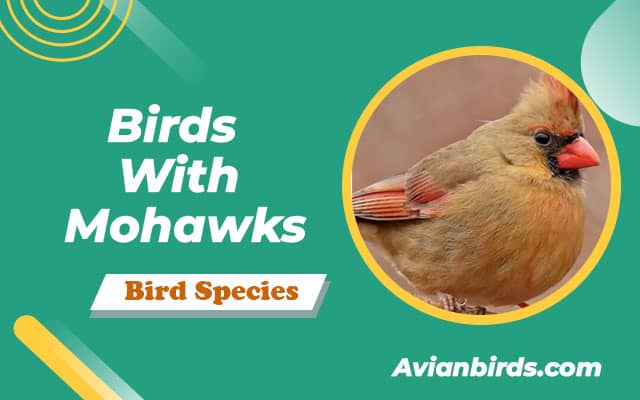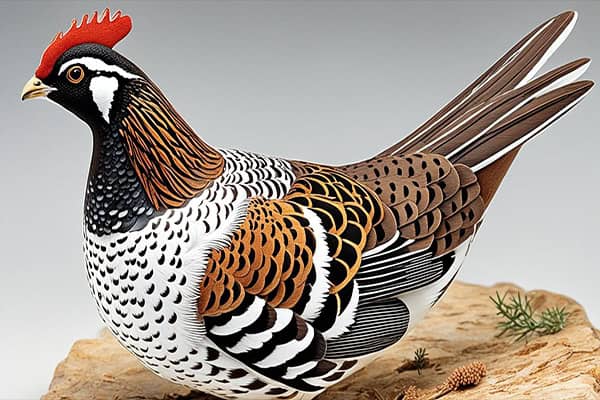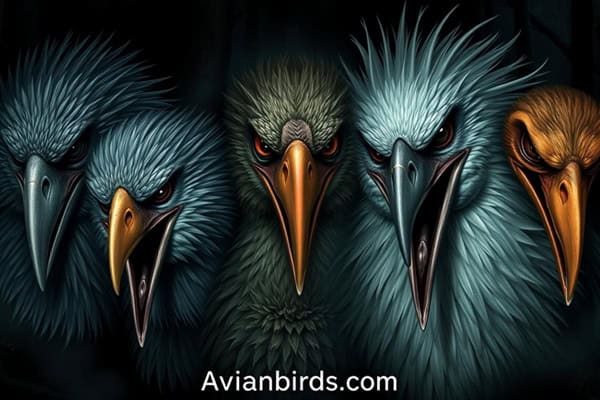Small Birds With Yellow Breasts (ID Guide)
Have you ever wondered about the small birds with yellow breasts in our skies? Each one has its own song and behaviour. Finding and identifying these birds can make any day special for bird lovers.
In this guide, we’ll dive into the world of small birds with yellow breasts. We’ll look at their striking features and how they fit into nature. From the Yellow Warbler to the Audubon’s Oriole, learning about these birds makes our bird-watching better. It also helps us appreciate nature more.
Introduction to Small Birds With Yellow Breast
In this guide, we dive into the world of small birds with yellow breasts. These birds are not just pretty with their bright yellow feathers. They also play key roles in their ecosystems.
The yellow color in birds often helps them attract mates and be seen during bird watching. This makes them a hit with birders.
Yellow-breasted birds live in rich environments. Also, They can blend in or stand out as needed. For example, the yellow-breasted chat is known for its unique looks and behaviour.
Knowing these traits helps us identify birds correctly. The variety among small yellow-breasted birds, like different warblers, adds to their charm. We also stress the need to protect their habitats as they face threats from environmental changes.
We’re excited to share more about these birds. We’ll cover their key traits, popular examples, and tips for identifying them. Let’s celebrate the beauty and importance of these small yellow-breasted birds.
Common Characteristics of Small Birds
Learning about small birds with yellow breasts can make bird watching better. These birds have unique traits in size and shape. Knowing these helps us spot them and enjoy their beauty in nature.
Size and Shape
Small black birds with yellow breasts are often big but not too big. They are bigger than sparrows but smaller than American Robins. They have long tails and big heads, making them good at finding food.
This knowledge makes it easier to identify them when we go bird-watching.
Color Patterns
The colors of small birds with yellow breasts help us tell them apart. They have bright yellow bellies and green or olive backs. They also have special markings like streaks or facial patterns.
In breeding season, males show off their bright colors to attract females. Females have duller colors to hide from predators. Watching these details makes bird-watching more fun.
| Bird Species | Size (inches) | Color Patterns | Notable Features |
|---|---|---|---|
| American Goldfinch | 4.5 – 5.5 | Bright yellow underbody, black wings | Conical beak, cheerful song |
| Yellow Warbler | 4.5 – 5.5 | Uniformly bright yellow | Thin, sleek body, melodic call |
| Prothonotary Warbler | 5.5 – 6.5 | Yellow belly, blue-gray wings | Cavity nester, bold behavior |
| Female Summer Tanager | 6.5 – 7.5 | Greenish-yellow | Clear, fruity song, robust body |
| Yellow-Headed Blackbird | 7.5 – 9 | Bright yellow head, dark body | Distinctive vocalizations, social behavior |
Popular Small Birds With Yellow Breast
We find many small birds with yellow breasts that delight bird watchers. Each bird has its own look and way of acting. This makes spotting them a fun part of bird watching.
1. Yellow Warbler
The Yellow Warbler is a favorite among bird watchers. Males have bright yellow feathers with reddish streaks. Females have a softer version of this color. They live in shrubs and wetlands, especially when they’re breeding.

2. Prothonotary Warbler
The Prothonotary Warbler is known for its bright yellow feathers on its head, neck, and belly. It has a greenish-olive back. In summer, they live in swamps and wet forests in the southeastern United States. They nest in tree cavities, which is interesting to see.

3. Audubon’s Oriole
The Audubon’s Oriole is known for its black head and yellow feathers. They live in southern Texas and Mexico. They like woody areas and eat fruit and insects. Their unique look and actions make them interesting to find.
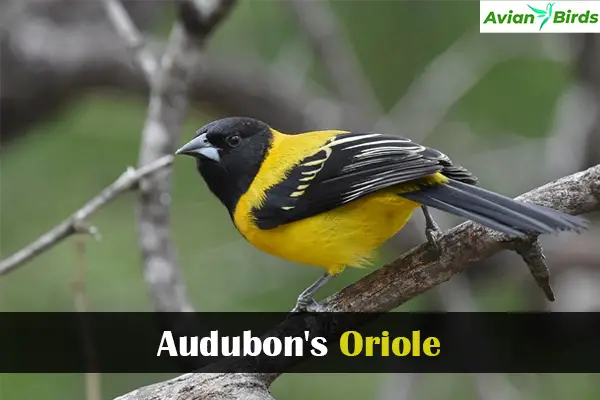
Habitat Preferences of Small Birds With Yellow Breast
Knowing what habitats small birds with a yellow breast like is key for bird watchers. These birds do well in dense shrubs and need certain places to live. The Yellow-breasted Chat, for example, loves areas with lots of shrubs for food and safety.
These places give them lots to eat and safe places to nest.
Common homes for these birds include:
- Riparian zones, where water bodies offer rich biodiversity and abundant food sources.
- Wetlands that provide a mix of vegetation essential for nesting and protecting their young.
- Coastal mangroves serve as crucial stopover sites during migration.
In these spots, birds find insects and fruits to eat. They switch to eating more fruits in fall and winter. This shows they can adjust to find food when it’s available.
But, urban growth and climate change threaten their homes. Knowing where they live helps us protect them.
Seeing these birds in their natural habitats is very rewarding. We enjoy their beauty by watching small birds with yellow breasts in different places. We also help save them by keeping their homes safe.
Must read: Black and White Birds in the UK
Behavioral Traits of Yellow-Breasted Birds
Small birds with yellow breasts are very adaptable. They play important roles in their ecosystems. Their foraging and breeding habits are key to their survival and success.
Foraging Habits
These birds have unique ways of finding food. Yellow-breasted Chats eat by holding food with their feet. This lets them eat insects and fruit efficiently.
They hop along branches to catch insects. Their diet includes:
- Insects
- Fruits
- Seeds
In the fall, they eat a lot of berries and fruit. This shows how they adapt to different seasons. Their foraging helps control insects and spreads seeds.
Breeding Displays
Breeding displays are crucial for attracting mates. Male yellow-breasted Chats fly in special ways to impress females. They fly with dangling legs and slow beats.
They also sing elaborate songs. This makes them stand out during mating. Their displays help them establish territory and attract mates.
| Behavior | Description |
|---|---|
| Foraging | Holds food with feet; primarily consumes insects and fruits. |
| Breeding Displays | Elaborate flight displays; males sing to attract mates. |
| Song Types | Males know 41-100 different songs; mimic various sounds. |
| Nesting | Builds nests in dense shrubbery; raises about two broods. |
Bird Watching and Identification Tips
Bird watching lets us connect with nature and see small birds up close. We need the right gear and tools to identify them so that they can enjoy it more.
Essential Birding Gear
Good bird-watching gear makes it easy to spot and watch small birds. Here are some must-haves:
- Binoculars: Choose lightweight, high-magnification binoculars to see small birds clearly.
- Field Guides: Guides with many images and descriptions help us know different bird species.
- Appropriate Clothing: Wear natural colors and layers to blend in and not scare the birds.
Tools for Bird Identification
Today, we have many tools and apps to help us identify birds. These tools make learning about small birds easier. Some popular ones are:
- Merlin Bird ID App: This app helps us identify birds by their color, where they live, and the sounds they make.
- Sibley Bird Guide: Known for its detailed pictures, this guide is loved by many bird watchers.
- Field Notebooks: Writing down what we see helps us keep track and learn more about birds.
Using the right gear and tools makes bird-watching more fun and educational. Whether we’re spotting small birds or learning about them, the right tools help us enjoy it more.
Birding Destinations for Avian Enthusiasts
Watching small birds with yellow breasts is a joy. Exploring the best birding spots makes it even better. The U.S. has many places perfect for seeing these birds, helping eco-tourism and bird watching.
Best Locations in the U.S.
Many great places in the U.S. draw bird lovers. Here are some top spots to see birds like American Goldfinches and others:
- Point Pelee National Park, Canada: It has over 390 bird species, perfect for migration.
- Estero Llano Grande, Weslaco, Texas: It has the most bird sightings in the world, a true paradise for birders.
- Western Treatment Plant, Victoria, Australia: With over 295 bird species, it’s a must-visit for bird watchers.
- Hampden County, Massachusetts: In spring, 579,300 birds come through, showing its rich wildlife.
- Anderson County, Texas: Over 3.9 million birds pass through one day, offering a unique experience.
Seasonal Considerations for Bird Watching
Knowing when birds migrate makes bird-watching better. The seasons change, affecting when to visit birding spots. Here are some tips:
| Season | Highlights |
|---|---|
| Spring | Many species migrate; see warblers and goldfinches. |
| Summer | Birds breed; see nesting and young birds. |
| Fall | Many species migrate; see colorful leaves and birds. |
| Winter | Bird feeders attract small birds; see goldfinches at feeders. |
These top birding spots and tips help us enjoy bird-watching. By visiting during migrations and focusing on key U.S. areas, we can see the beauty of small birds, especially those with yellow breasts.
Photography Tips for Wildlife Photography
Capturing small birds, especially those with vibrant yellow breasts, needs special techniques. We can get better at taking pictures of these birds by learning how to do it right. Here are some tips to help us take amazing photos of small birds on our birding trips.
Capturing Small Birds in Action
Good bird photography takes patience and planning. Small birds are hard to see in trees, making it tough to get clear photos. In places like Washington DC, we face this challenge often. Using strong lenses and the right settings can help us get the shot.
Here are key tips to consider:
- Lens Selection: Start with an 800mm lens for distance for small birds like the Yellow-throated Warbler. But, a 400mm lens works better when birds come closer.
- Photography Settings: The best settings for these birds include:
| ISO | Aperture (f-stop) | Shutter Speed (s) |
|---|---|---|
| 250 | 9 | 1/1000 |
| 800 | 9 | 1/1250 |
| 800 | 8 | 1/1000 |
| 1000 | 8 | 1/2500 |
- Utilize Natural Light: Shooting during the golden hours—early morning or late evening—adds soft, warm light to our photos.
- Know Bird Songs: Learning bird sounds helps us find birds fast and increases our chances of getting them in action.
- Migration Hotspots: Places like Magee Marsh in Ohio are great for catching warblers during migration. Spending a week or ten days there boosts our chances of success.
Using apps like Birdsnap can make identifying birds easier. As we improve our wildlife photography, let’s enjoy the excitement of each birding trip. With practice and a sharp eye, we’ll capture the beauty of small birds, making photos we’ll treasure forever.
Read More🐦Related Articles:
| Spiritual Meaning of Ants in the House |
| Black Swan Bird |
| Small Birds With White Stripes On Wings |
| Small Birds With Orange Beaks |
| Small birds With White Tails |
Conclusion
Small birds with yellow breasts are truly special. They add beauty to our world and are key to our ecosystems. From the Prothonotary Warbler to the Western Tanager, they show us the beauty of nature.
Knowing about these birds helps us enjoy watching them more. By paying attention and using the tips we’ve shared, we can learn to love these birds. This is especially true for birds like the Yellow-breasted Chat, which need our help.
Let’s work together to protect these birds. By learning more about them and their homes, we help future bird lovers. Together, we can make sure these birds are around for a long time.

